SUCCULENT TISSUE CULTURE
a project by Robert Wellens
Peter Lapshin, Moscow, Russia
"Succulent Tissue Culture" Laboratory is situated in the Netherlands, south of Rotterdam. Laboratory's address / visiting address: Succulent Tissue Culture, Kort Eind 3, 4651 PE Steenbergen, the Netherlands. Phone/fax: (+) 31-113-556001. E-mail : wellens@succulent-tissue-culture.com
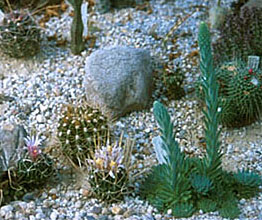 |
| Photo 1 |
Succulent Tissue Culture Laboratory by Robert Wellens performs propagation of rare and endangered species of cacti and other succulent plants using in vitro technology. STC Lab also carries out researches on possibility of in vitro propagation of other decorative plants and rare caudiciforms. Recently the Laboratory has grown plenty of decorative plants for the clients from many countries of the world. Nowadays the STC Lab works with more than 80 species of decorative plants and this number is steadily increasing.
Photos 1–5 show some of the plants from the STC Lab collection. Many of them have been grown using in vitro technology. Now they are mature and blooming plants well adapted to the greenhouse conditions.
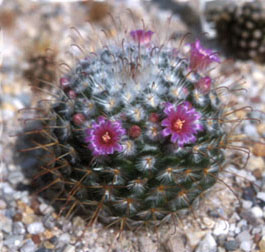 | 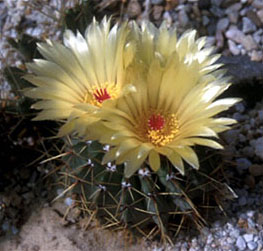
|
Photo 2| Photo 3
| |
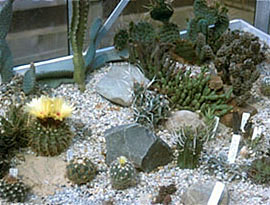 |
| Photo 4 |
In vitro technology is a combination of methods designed for super effective vegetative propagation of plants. This technology allows to restore whole plants from very small individual fragments of any plant organ or tissue, i.e. stems, leaves, root tips, flowers, petals, stamens, pollen grains and so on – from those organs that can't develop into plants by themselves in the usual way. The technology is based on the idea that it's possible in principle to regenerate a whole organism from an individual cell. The problem here is to provide necessary conditions for such regeneration.
In vitro technology had been rapidly developing in the sixties thanks to the successful researches in molecular genetics. Nowadays plants cell and tissue culture is widely used in genetic engineering.
Besides genetic engineering, in vitro technology is extensively used in selection of plants since it allows to break biological barriers hindering the intercrossing between distant species. In addition to this the entire process of selection using in vitro technology is considerably accelerated.
Cells and tissue culture is widely used for vegetative propagation of plants – this procedure is also called micropropagation of the plants. In vitro technology is very effective in propagation of rare and difficult in cultivation plants. This technology also allows to propagate unique mutations and hybrid plants existing only in single specimens. In vitro technology allows to obtain about a million specimens from only one meristem. STC Lab is engaged in micropropagation of succulents and other decorative plants and also performs researches with an aim to obtain mutant super decorative plants, e.g. plants with variegated leaves.
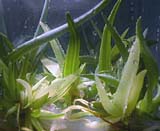
| 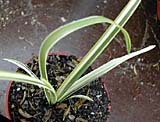
|
Photo 6. Aloe compressa v.Schistophylla variegata
| Photo 7. Yucca sp. Illinois variegata
| |
Using in vitro technology the STC Lab has managed to get variegated and crested forms of some succulent plants, e.g. Aloe, Yucca and Haworthia (see Aloe compressa v. schistophylla variegata in photo 6). Another example of induced variegation is Yucca sp. from Illinois (without name as yet) – see photo 7. Variegated plants obtained by the STC Lab will be later on sale and experiments with variegation go on using other species of plants.
Using in vitro technology the STC Lab has also succeeded in inducing cristate growth in cacti (see photo 8 and 9).
A chaotically growing (callus) tissue (photo 10) consists of chaotically and unrestrictedly dividing cells and in theory any of these cells provided appropriate conditions may give rise to a whole organism. Processing with mutagen substances stimulating changes in the genetic complex may swiftly give results which otherwise would be impossible or very hard to obtain.
A distinct feature of in vitro technology as compared to traditional vegetative propagation is the usage of synthetic growing media, balanced in minerals and vitamins. These media often contain hormones to help the cells grow according to the plan. All the work is done in totally sterile boxes in order to avoid the unwelcome growth of fungi and bacteria (see photo 11). Plants or their tissues are kept in hermetically closed vessels (photos 12–15). Each vessel contains a growing medium with agar-agar. Vessels with plants are placed in specially equipped rooms with adjustable micro climate: temperature, humidity, illumination and photoperiodicity (photo 16).
All the main works in the applied sciences using in vitro technology were carried out on plants important for agriculture or other spheres of human activity. It's obvious that succulent plants do not belong to the agriculturally important objects being mainly decorative plants. That's why the Succulent Tissue Culture project by Robert Wellens may be considered as a pioneer's work closing this substantial gap at the modern level of biology.





